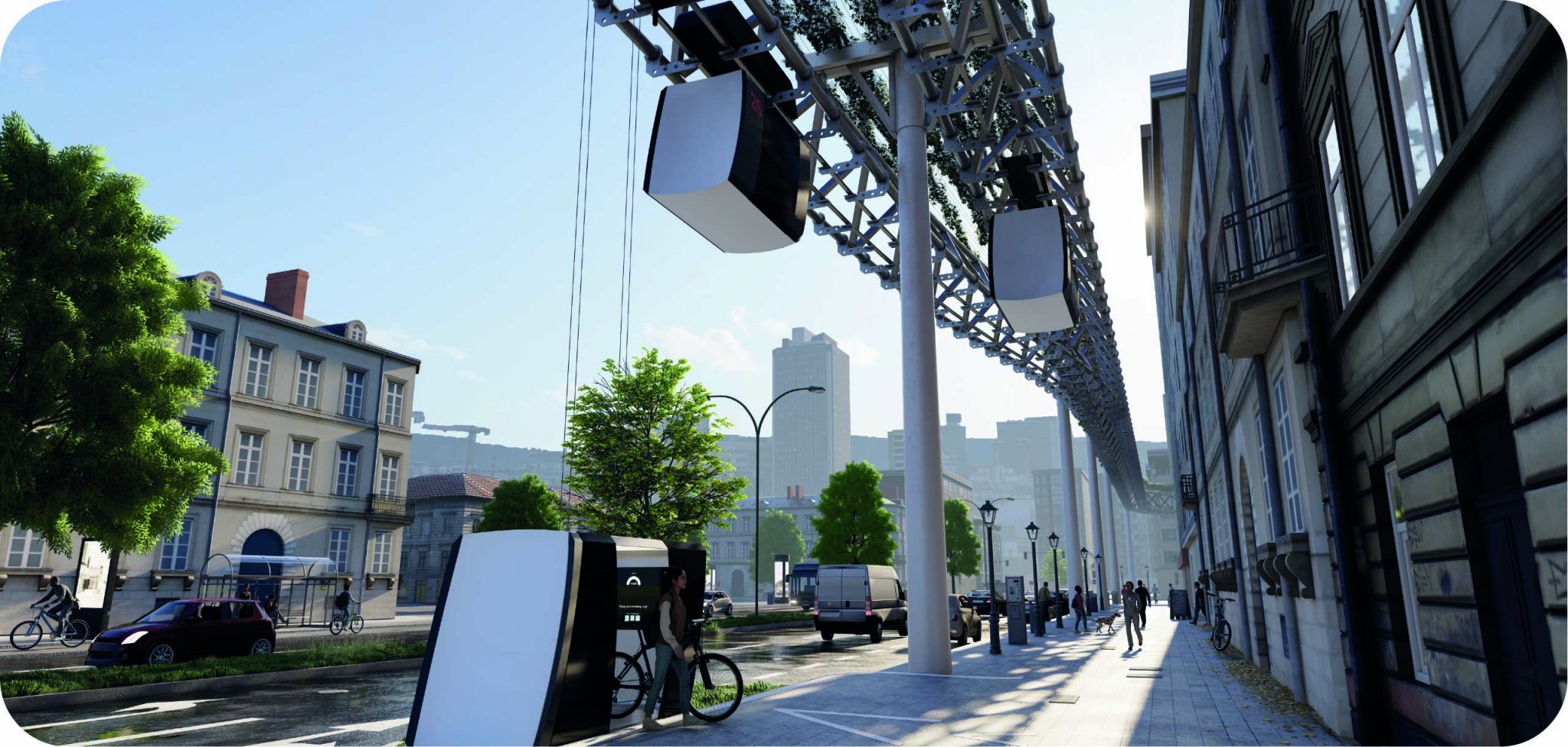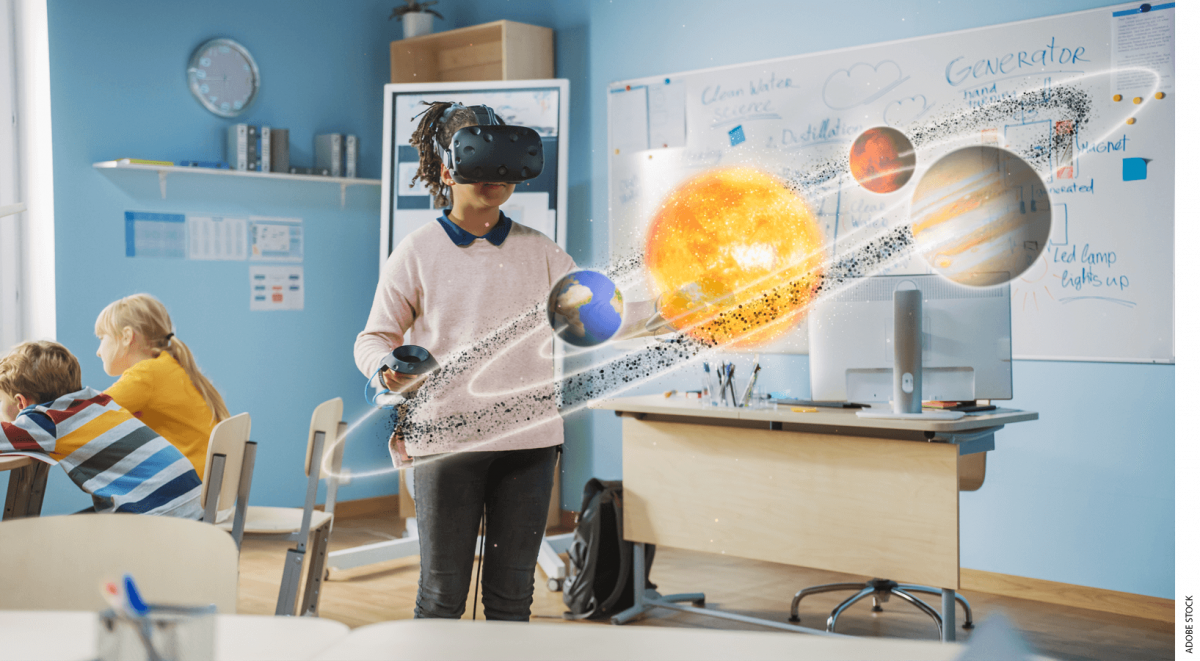Today, the issues of global warming become increasingly apparent. That is why many people try to reduce their reliance on technologies and products which have a negative impact on the environment. They seek sustainable solutions as substitute for non-sustainable ones. Therefore, many people mention either electric vehicles or public transport as a sustainable solution instead of traditional cars and taxis (Vidal, 2022). However, both these solutions have potential difficulties. Electric vehicles might be sustainable but in many cities, there is an inherent problem of traffic congestion, leading to attempts to ban cars (Vidal, 2022). To avoid these congestion issues, there are public transport systems using rails (Metros and trams). However, they are reliant on space inside cities which is becoming increasingly scarce. Additionally, they have fixed stops, with sometimes significant distances between stops, making them less attractive than cars. That is why a Germany startup decided to develop a transport system which makes use of the space above streets.
The ottobahn is a transport system using the suspension railroad approach. The idea is to build hanging cabins that are guided by a railroad system in the air, to avoid traffic congestion inside the cities while enabling individual stops along the way. This railroad system is supposed to be distributed throughout the city. The system includes: 1) the suspension railroads ca. 5 – 10m above the ground, 2) the cabins which have space for up to 4 people, 3) the parking/lowering technology, that lowers the cabin to street-level, 4) an AI powered software that enables the determination of routes and management of systems for traveling and safety, and 5) a platform to book rides. Compared to normal public transport solutions the system is designed to enable stops almost everywhere along the way due to the lowering mechanism and the individual cabin design. Furthermore, it is supposed to enable a transport free of switching trains/cabins as the rail system is interconnected at every point. To enable a sustainable travel the system will be equipped with solar panels to automatically generate a large amount of power used for the operation. However, next to city travels, the system is also supposed to enable the travel between different city systems with speeds up to 250km/h. (Höpner, 2020; Ottobahn, n.d.; Richter, 2022)

Ottobahn (n.d.). Ottobahn concept. https://ottobahn.de/en/home/
Although this concept is still in its development phase, the planned date for being ready for series production, is projected for end of 2022. At the same time there is significant positive feedback from the politicians in Munich (Germany) who are looking forward to a first commercial railroad in the next years (Richter, 2022).
I think this system could offer a good alternative or addition to current public transport systems already available. The design makes use of city space which is currently not used and therefore enables more freedom when it comes to planning and building optimal routes. Furthermore, it is a new technology that tries to reduce the number of cars while being sustainable and independent from streets which cities are beginning to close down to reduce the number of vehicles in the cities. However, the success of the product is also highly dependent on the railroad system that they will be able to build. If it should be too small and hinder free and flexible travel, the advantage of the solution will be extremely limited, with current public transport systems having the edge. Furthermore, it is of course highly dependent on the acceptance of such a system by the local governments and citizen. Nonetheless, I think the idea behind this new transport system is a highly interesting one and worth to follow in the future.
What do you think? Could this technology be a solution to our current problems regarding sustainability and transportation in cities? Or do you think it one more new technology which will fail to create significant change?
References
Höpner, A. (2020, July 15). Ein Autoexperte will mit einer Gondelbahn den Verkehr revolutionieren. Handelsblatt. https://www.handelsblatt.com/technik/thespark/start-up-ottobahn-ein-autoexperte-will-mit-einer-gondelbahn-den-verkehr-revolutionieren/25958804.html
Ottobahn. (n.d.). Ottobahn: Moving technology & innovation. Retrieved September 25, 2022, from https://ottobahn.de/en/technology/
Richter, D. (2022, March 17). Die Ottobahn – Neue Form der Mobilität für die ganze Welt. Merkur. https://www.merkur.de/lokales/muenchen-lk/taufkirchen-bei-muenchen-ort486320/neue-mobilitaet-fuer-die-ganze-welt-91417601.html
Vidal, J. (2022, August 30). Transport The age of ‘the car is king’ is over. The sooner we accept that, the better. The Guardian. https://www.theguardian.com/commentisfree/2022/aug/30/car-is-king-accidents-pollution-road-vehicles-public-transport

